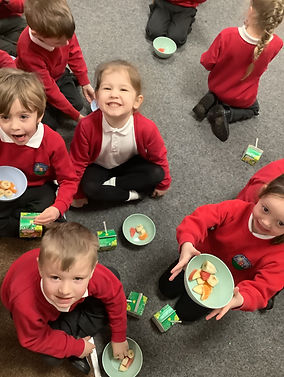DT
Our DT curriculum will give children experiences that they can reflect on and respond to using different media. We will encourage children to respond to books, poems, paintings, real life experiences, objects and the natural world. They are given time to investigate textile products, mechanisms, food products and structures.
Children will be proud of their achievements and have a love of creativity. They will use this creativity to feed into a greater understanding of the world around them and encourage them to be inclusive in their views, enabling them to lead happy, healthy, and productive lives.
Through a mixture of continuous provision and adult led activities in foundation stage, pupils will have the opportunity to investigate, explore and develop their own ideas. Through focused practical tasks in KS1 pupils will be able to explore and develop new skills such as joining, cutting and peeling. They then use these new skills to design and make new products for a purpose.
What does the National Curriculum say we should teach our pupils?
The national curriculum aims for design and technology:
-
develop the creative, technical and practical expertise needed to perform everyday tasks confidently and to participate successfully in an increasingly technological world
-
build and apply a repertoire of knowledge, understanding and skills in order to design and make high-quality prototypes and products for a wide range of users
-
critique, evaluate and test their ideas and products and the work of others
-
understand and apply the principles of nutrition and learn how to cook
National curriculum for Key stage 1 states pupils should be taught:
-
design purposeful, functional, appealing products for themselves and other users based on design criteria
-
generate, develop, model and communicate their ideas through talking, drawing, templates, mock-ups and, where appropriate, information and communication technology
-
select from and use a range of tools and equipment to perform practical tasks select from and use a wide range of materials and components, including construction materials, textiles and ingredients, according to their characteristics
-
explore and evaluate a range of existing products
-
evaluate their ideas and products against design criteria
-
build structures, exploring how they can be made stronger, stiffer and more stable
-
explore and use mechanisms in their products
What projects might the children get to work on?
The children will have the opportunity to work on many design projects over the years covering skills and knowledge needed for modelling (structures and mechanisms), textiles and food and nutrition.
Year 2 children enjoying DT projects
Foundation Stage children exploring DT











Latest Work





